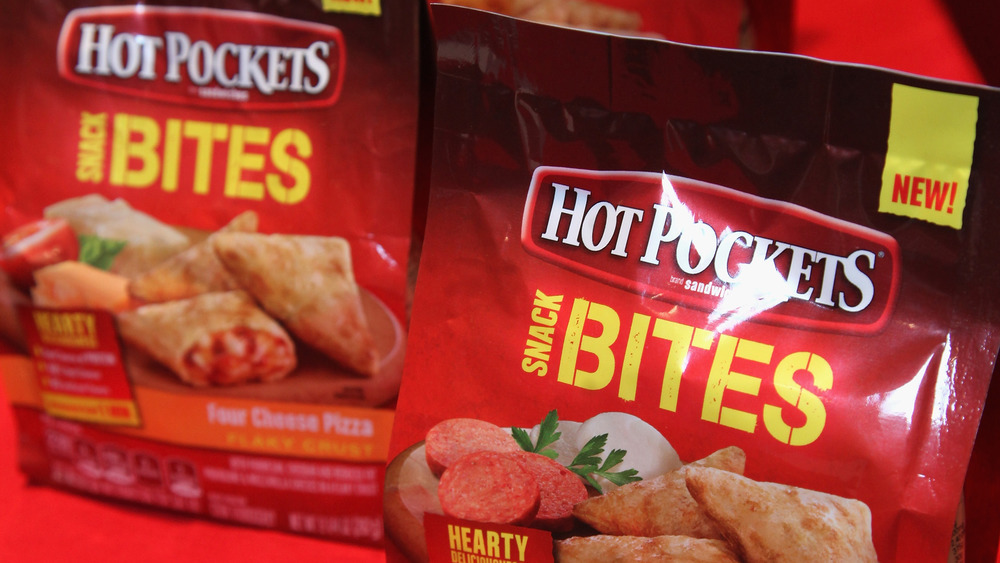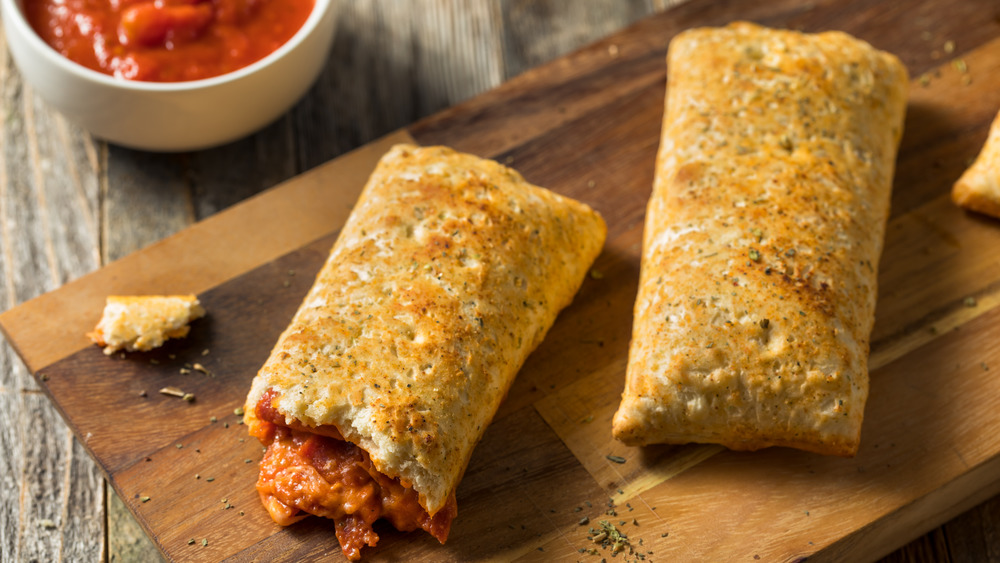This Is The Actual Name For The Hot Pockets Sleeve
No matter how old you get, there's nothing that quite compares to the cheesy, meaty, saucy goodness of the classic Hot Pocket. Since the 1980s, these microwaveable turnovers have been the go-to bite for everything from after-school snacks for hungry kids to easy, no-fuss dinners for busy adults.
After just two minutes in the microwave, the meat and cheese-filled sandwiches not only come out piping hot, but the dough has browned and turned crispy, like it has been baked in a conventional oven. The melty cheese and crispy brown crust is actually brought to you by advancements in microwave technology. The sleeve is really called a susceptor, and it's a little more sophisticated than its unassuming cardboard exterior would have you believe.
While the outside is regular cardboard, the sleeve's interior is actually laminated with a metalized film, according to How Stuff Works. Once it is put in the microwave, the film turns the microwave energy into radiant heat, which enables the food to brown and turn crispy, instead of becoming a soggy, unappetizing lump of dough.
The susceptor uses microwave energy to brown your Hot Pocket dough
Per the susceptor's patent, the "food item is wrapped with plastic film or other dielectric substrate...which controls the microwave conductivity when the package is placed within a conventional microwave oven." The covering then "converts some of the microwave energy into heat which is transmitted directly to the surface portion so that a browning and/or crispening is achieved...The microwave energy not converted into heat by the coated film passes through the film to dielectrically heat the single food item."
Although the satisfying Hot Pockets experience is made possible thanks to the susceptor, Paul and David Merage, the creators of the microwaved snack, cannot claim credit for the invention. The first susceptor was actually patented by a Minneapolis-based inventor named William A. Brastad in 1981, and it has been changing the landscape of convenient frozen dinners ever since. In addition to Hot Pockets, numerous other ready-made meals, like corn dogs, paninis, and egg rolls, use this same sleeve technology to make their TV meals taste more like real home cooking.

